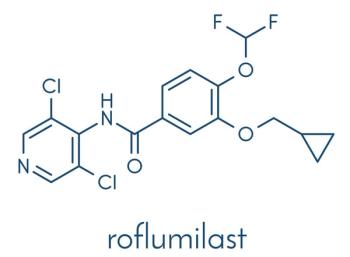
Conditions That Are More Common in Women-A Photo Quiz
Conditions unique to women are relatively well known. But, are you familiar with the range of diseases that affect both sexes but are seen more often in women? This week’s photo quiz tests your knowledge of a variety of disorders you’ll find more often in your female patients.
Question 1:
Dermatomyositis is a systemic disorder that manifests with inflammatory myopathy and cutaneous eruptions. Distinctive red, blue, or purple patches and plaques are often present. Presentation may include erythema of the face, neck, upper trunk, knuckles, elbows, and knees.
For the discussion, click here.
Click here for the next question.
For the answers, click here.
Question 2:
A 24-year-old woman presents for evaluation of a pigmented area on her face, present since birth. The area is asymptomatic, and the patient is mostly curious about cosmetic improvement. The cutaneous and scleral blue-gray pigmentation in the distribution of the ophthalmic and/or maxillary branches of the trigeminal nerve seen here is known as nevus of Ota, a benign dermal melanocytosis.
For the discussion, click here.
Click here for the next question.
For the answers, click here.
Question 3:
A 62-year-old woman was evaluated in preparation for cholecystectomy. She had no cardiac or pulmonary disorders. The physical examination was unremarkable other than a purplish red lace-like pattern on the skin. The mottling was most prominent on the thighs (seen here) and forearms. She had been experiencing the rash for 3 years but denied any associated pruritis or pain.
For the discussion, click here.
Click here for the next question.
For the answers, click here.
Question 4:
A 48-year-old woman sought medical attention after an episode of gross hematuria associated with mild right-sided loin discomfort. Plain radiography with a kidney-ureter-bladder view revealed multiple opacities in the region of both kidneys and specifically in a location that corresponded to each renal pelvis. A subsequent intravenous urogram confirmed the presence of bilateral renal staghorn calculi and a right ureteral stone within a ureterocele.
For the discussion, click here.
Click here for the next question.
For the answers, click here.
Question 5:
This rash erupted on the upper body of a 58-year-old woman. It was mildly pruritic and nontender. The patient had not started any new medications and was not taking photosensitizing drugs. She had Sjgren syndrome; the rest of her history was noncontributory.
For the discussion, click here.
For the answers, click here.
ANSWER KEY:
Question 1. Answer: D
Question 2. Answer: A
Question 3. Answer: D
Question 4. Answer: E
Question 5. Answer: A
Newsletter
Enhance your clinical practice with the Patient Care newsletter, offering the latest evidence-based guidelines, diagnostic insights, and treatment strategies for primary care physicians.



















































































































































































































































































